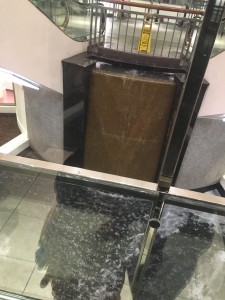Georgia State University is one of the most up and coming universities of our time. Our campus is tremendously diverse, ranging from students who are right here in Atlanta, to overseas. According to Forbes, “America’s Top Colleges”, we have around 40% African Americans , 32% Caucasians, 11% Asians, and 9% Hispanics enrolled here at Georgia State. The diversity here has been nationally recognized in recent years bringing more popularity to the campus which has encouraged many people to attend our school (Georgia State University). I’ve personally spoken to people who wanted to attend Georgia State because they know the campus is engulfed with people from all walks of life.
The university, until recent years, was mainly a commuter school and owned no dorms for students. Today we have the University Lofts, University Commons, Piedmont North, Patton Hall, and now a new dorm right across from the University Commons, Piedmont Central. This is quite a rapid expansion for the University as well as the city of Atlanta. According to Wikipedia sources, in 2014 crime in Atlanta caused around 513 robberies and 661 Aggravated Assault cases (Wikipedia). These crimes are not new to downtown, they’ve been going on for quite some time. Young and unaware college students can become an easy target for the next perpetrator lurking through the skyscrapers. The University Library has recently been hit with a few unexpected robberies, the victims being students held at gunpoint. This speaks volumes on our protective security measures here at Georgia State, and how this might just be inevitable because of the location our school is set in. I believe the openness of Georgia State’s campus makes it more prone to crime by the universities location in the downtown area, the expansion of our school in student body visibility around campus, and lack of effective security implemented at our school to secure our safety everywhere around campus.
I believe we are more likely to experience crime at our school because our campus is open to the community and spread out over downtown Atlanta. Georgia State is located around Grady Hospital, Hurt Park, Five Points, Woodruff Park, Peachtree Street, Auburn Ave, Edgewood Ave, and our own Marta Station at the very edge of campus. There is a heavily concentrated homeless population downtown. I’ve witnessed many homeless people sleeping in parks, at the street car stations, on the sidewalk, and many more unusual places. Some of the homeless are very aggressive and tell you to give them money. Others wander all day and night looking for money or resources to help them for that day. The homeless population downtown intermixed with college students, still mostly living off of their parents and the government, could pose a security threat if one decided to mug a student.
At night, it’s not safe to walk around the campus like you would in the daytime. Georgia State provides golf carts to take students where ever they need to go from the hours of 6 pm through 1 am, if they feel unsafe walking or just don’t want to. Georgia State also provides ambassadors who will ride a bike alongside of you and make sure you get where you need to go safely (Georgia State Panther Ambassador). Even with such security measures taken, there still seems to be crimes such as robberies, aggravated assault, and more. The university seemed to think these security measures were enough to safeguard students, however, a lot of the student body seems to think otherwise.
Niche.com, a website allowing students to gain a better overview on certain colleges and universities, state that many students on our campus are afraid to walk around at night. Many students feel they need a buddy when walking after dark, campus buildings like Aderhold, which are isolated from the main campus are not so safe to walk alone to at night. With recent drug busts, robberies, and even car accidents many students are worried about the safety of campus (Niche). Opening the library to a relatively dangerous community around us may not be in the best interest of our students. We should have block offs in important areas or barriers around the campus. I also feel that our library should be open to Georgia State students only to minimize and prevent further violent robberies from happening. In a city as big as Atlanta, we have to take precautions security measures to protect our school from whoever or whatever is hiding in Atlanta’s busiest area.
I also believe the reason why Georgia State is becoming a hot spot for crime is because of it’s gradual transition from a commuter school to a university with an increasing amount of campus life. Working at the Georgia State University Call Center, I had to call alumni and ask about their experiences here at Georgia State. Some people who graduated in the seventies from the university explained how it had relatively no campus life and everyone commuted (Alumni, Georgia State). As time has passed it has grown in size and reputation to become the Georgia State University Panthers in the heart of downtown Atlanta. We are known to be one of the most diverse Universities in the Nation (Georgia State University). Various groups intertwined together: living, working and learning, all here in downtown. However, as students living in this area, we have the greatest chance of running into danger.
Recalling from the beginning of this semester, I remember receiving a Campus Alert to my student email stating, “Two Armed Robberies were reported to Georgia State Police Department on January 28, 2016 at approximately 7:41 a.m. and 7:45 a.m. in Library North. Two Georgia State students stated they were robbed at gunpoint of their computers while in the library. The suspect is described as a black male, wearing black Adidas shorts, black top and grey beanie. A person of interest is in custody.”(Georgia State University “CAMPUS ALERT” Campus Broadcast. 2016. Student email.). This made myself, and many other student all over campus afraid to study in the library. When students are robbed at gunpoint, we have to ask ourselves what contributed to these events. Is it the fact that our campus is so spread out over the chaotic downtown that we are more susceptible to crime than closed-in campuses? According to the statistical reports on the Georgia State University website, aggravated assault has almost tripled since 2012, robberies and car theft are number two and three on the top crimes committed at Georgia State (GSU Safety).
In our urban area of metropolitan Atlanta there are many diverse groups of people floating through the area on a daily basis. There are business professionals, business owners, college students, and friends of college students, parents, and high school students visiting campus, protesters, guests, homeless people, drug dealers, scam artists, and many more. With all these people in our vicinity daily, it can be hard to avoid being a victim to these crimes. They could happen to anyone. As commuter life of Georgia State continues to disseminate and more dorms are built, an influx of people will attract more criminals. As a university in this area, we as students have to be not only aware but prepared if someone tries to attack us. Our school needs stricter security where these robberies were committed and we need a more effective police force, not just more cops.
I believe one of the most crucial reasons why we have security issues at our school is because of the lack of an EFFECTIVE police force. The Georgia State Police are very abundant on our campus. However, crimes is still happening that could easily be avoided, right under their nose. From CBS46, several incidents involving robbery and threats with guns enabled the Georgia State University Library to close its doors to the public. After these robberies happened, new surfaced that the Georgia State University Library only had cameras in the stairwells. According to a message from President Mark Becker, “He has authorized University police to double the number of police officers on each shift patrolling campus and take steps to secure entrances and exits to the building, including having officers checking university IDs at entrances. They will install additional security cameras at the library and the library will temporarily close to the public while the new security measures are put in place. Police will also hold campus safety forums (CBS46).” If the Library had security cameras in more secluded areas of the library these incidents could have been avoided. Trying to make up for lost efficiency the President has now decided to close the library to the public and make sure everyone is who they say they are, including using scare tactics such as police officers at the entrance and exit doors. The lack of effective security on campus is what contributes to most of the crime.
Georgia State is a campus spread out over downtown Atlanta. Georgia State University’s security measures being as low as they have been in downtown Atlanta is a contradiction against the location we surround ourselves in. We need to be secure around the clock. Our students should always feel safe no matter where they are, because our school is a haven for learning not a hub for crime. The location should have effective security measures to make sure we are all kept safe. Inevitably, many whom are not affiliated with Georgia State at all are in constant contact with students that do attend the university. For us to stay safe on such in such a busy metropolitan area we need to be aware of our surroundings and crimes that usually go on around us. Georgia State also needs to focus more on protecting their students than making money from them.
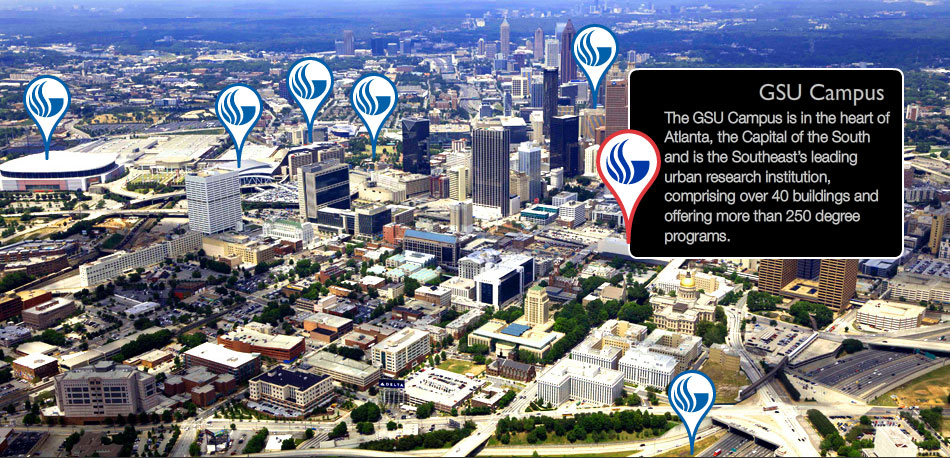
Map of Georgia State in the downtown area.

Image of suspect to be on the look out for. Perpetrator of one of the Library robberies.

Library Plaza on any given Tuesday or Thursday. This can be a hot spot for crime with such large crowds.

Check-in line for University Commons guest. In recent years we’ve had many issues with people who don’t live here trying to sneak in the dorms with someone else’s access card.

Police force at Georgia State.

Homeless sleep where they can around the downtown area.
Georgia State University. “Georgia State Sets Record for Diversity and Size of Freshman Class.” Gsu.edu. Georgia State University. 10 Sept 2013. 1 April 2016.
Wikipedia. “Crime in Atlanta.” Wikipedia.com. Wikipedia. 19 March 2016. 1 April 2016.
Georgia State University. “Panther Ambassador.” Gsu.edu. Georgia State University. 1 April 2016.
Niche. “Health and Safety” niche.com. Niche. 1 April 2016.
Georgia State University. “Statistical Reports.” Georgia State University Safety and Security. 1 April 2016.
CBS46. “GSU increases security after library robberies” 25 Feb. 2016. 1 April 2016.

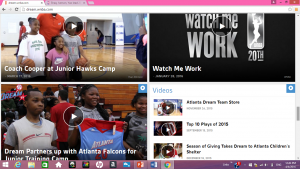
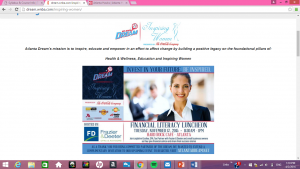
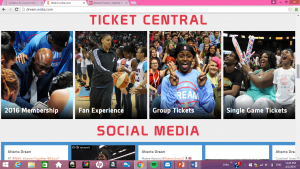

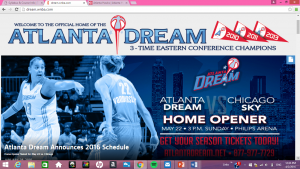
)


